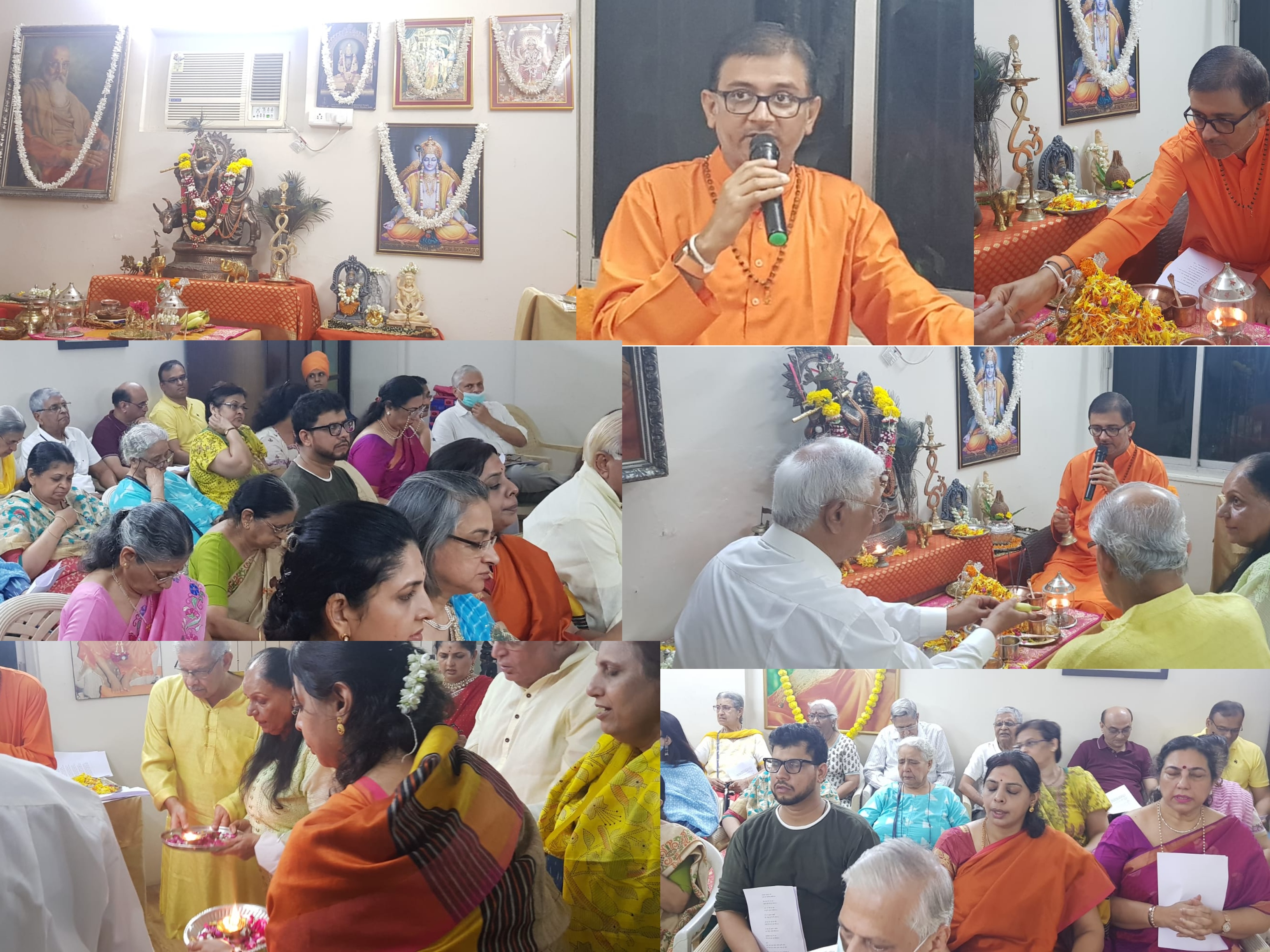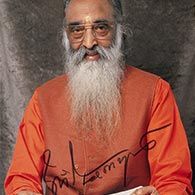
Saturday, April 16 2022 was an auspicious day for Chinmaya Jayam for several reasons. It was Hanuman Jayanti. Secondly, it was the day when the Chinmaya Jayam centre opened after being closed for two years and we were able to celebrate in person. Thirdly, Pujya Swami Swatmanandaji joined us for the celebration and conducted the puja. Our President, Meghana Patel, our Past President, Bharat Shah, our Trustee, Anjali Dalal, the past President of Jayam, Mukesh Trivedi, were also present. It was a special day for all of us.
Swamiji was welcomed with the Purna Kumbha and met the sadhakas who had come. He then gave a brief but enlightening talk on the five qualities that make Hanumanji a Mahaveer. It is not enough for us to only know the qualities; we must also make an effort to emulate them in our own lives.
1. Raṇavīr is a person who is brave enough to face any challenge in life like a warrior. Hanumanji never retreated or even hesitated when he faced a challenge, be it crossing the seas to Lanka, confronting Ravana when he was captured in Lanka, or bringing the life-saving Sanjivani herb to save Lord Rama and Lakshmanaji.
2. Vidyāavīr is one who has deep scriptural knowledge. Hanumanji received this knowledge direct from Lord Surya and it to his own life. His wisdom helped him differentiate between shreyas and preyas; he was also “cātura”: he knew the ways of the world. He was a selfless devotee who never sought fame or recognition.
3. Dānavīr is one who is ever charitable, whose nature is charitable to everyone. When Ravana had Hanumanji’s tail burned, he did not attack Ravana to get vengeance. He advised Ravana about the power of Lord Rama, to release Sitaji and avoid defeat in the war.
4. Dayāvīr: Hanumanji was full of compassion and love for all beings. When Sugriva had lost his kingdom to Vali, Hanuman served him selflessly. When Lakshmanji was badly wounded by Indrajit during the war, Hanumanji saved his life with the sanjivani herb. When Sitaji despaired of Lord Rama finding her and was about to give up her life, he reached her just in time to save her.
5. Tyāgavīr. Tyāga in Sanskrit has several meanings. One meaning is ‘sacrifice’; the other is ‘detachment’. The one who is able to sacrifice by surrendering the inferior for the superior and serve by staying detached is a Tyāgavīr. Hanumanji was the embodiment of sacrifice and service. He never did anything for himself. As the minister of Sugreeva, he worked for Sugreeva. As the devotee of Ramaji, the Lord’s work was his life. He had no personal purpose.
Swamiji then conducted the Puja, followed by Arti and the chanting of Hanuman Chalisa three times. He concluded the celebrations with Uttar Pooja and Vedic Aarti and the Shanti Path. It was a joyous and uplifting experience for all the people present.


